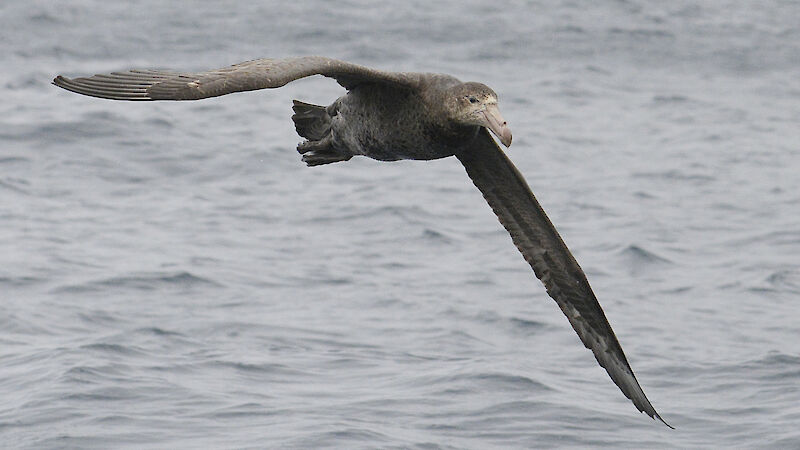A northern giant petrel has been found 40 years after it was banded by Australian researchers on a remote sub-Antarctic island, setting a new record for the species.
The seabird was leg-banded as a chick on 23 January 1981 by the Australian Antarctic Division at Mawson Point, Macquarie Island.
40 years later, on 5 February 2021, the bird was recovered at the end of its life at Waikanae Beach, New Zealand, over 2,200 kilometres from its banding location.

Dr Barbara Wienecke, seabird ecologist with the Australian Antarctic Division, said the recovery of the band provides valuable life history data for the species.
"'131-40970' was one of thousands of northern giant petrels banded at Macquarie Island and other sub-Antarctic islands," she said.
"Between 1967 and 1987, more than 3,000 northern giant petrel chicks were banded at Macquarie Island alone."
"With a recovery rate of around 2 percent, lots of birds had to be banded in order to find just a small number, so bird banding was a very labour-intensive effort."
"We no longer band birds in Antarctica and on sub-Antarctic islands, as it can be intrusive for the animals and we now have different technologies like satellite tracking to get better information."
Commencing in 1953, the Australian Bird and Bat Banding Scheme (ABBBS) manages more than 4 million records of banding data on Australian bird and bat species, including threatened and migratory species.
The ABBBS confirmed that the recovery of this band is a record of the oldest Australian-banded northern giant petrel.
"This recovery illustrates the value of long-term monitoring programs such as the ABBBS," a spokesperson said.
"This band represents the longest time elapsed between banding and recovery recorded for this species, and is one of the oldest birds ever recovered under the Scheme."
"The maximum longevity record of an Australian-banded bird is held by a short-tailed shearwater which was recovered 48 years and 3.8 months after banding."
The ABBBS holds 13,400 banding records for northern giant petrels, of which 564 have been recovered. The average time elapsed between banding and recovery is 8 years and 7.6 months.
Northern giant petrels are large seabirds with a circumpolar distribution, roaming vast distances over the Southern Ocean.
The average distance between their banding and recovery location is 1,905 km, with a maximum record of 10,846 km from Macquarie Island to Henties Bay in Namibia.
"In a satellite tracking study of northern giant petrels from Macquarie Island, some adult birds travelled more than 2,000 kilometres during the breeding season," said Dr Wienecke.
"A fledgling seems to have been on its way to Chile when the tag stopped working. By then this young bird had travelled more than 6,000 kilometres."
Northern giant petrels breed on Macquarie Island and other islands in the Southern Hemisphere.
They are predatory and opportunistic feeders, eating krill, squid, fish, other small seabirds, and carcasses of marine mammals.
Northern giant petrels are listed as migratory and threatened (vulnerable) under the Environment Protection and Biodiversity Conservation Act 1999 (EPBC Act).
The Australian Bird and Bat Banding Scheme (ABBBS)
The Australian Government, under the auspices of the Australian Bird and Bat Banding Scheme (ABBBS), manages the collation of banding data on Australian bird and bat species including threatened and migratory species. The ABBBS commenced in 1953 and its database holds more than 4 million records.
The ABBBS was established to support research into the movements and life histories of Australia's bird and bat species. The data collected by the ABBBS are used to underpin decisions on Matters of National Environmental Significance under the Environment Protection and Biodiversity Conservation Act 1999, and to meet Australia's reporting obligations under migratory bird agreements with the Governments of China, Japan and the Republic of Korea.
The ABBBS helps researchers to achieve their objectives through the supply of uniquely numbered bands to allow individual identification of birds and bats, the long-term curation of banding and recovery data, provide standardised band designs, capture procedures and data recording protocols. The ABBBS also alerts banders when their bands are recovered by the public or by overseas banding schemes.






